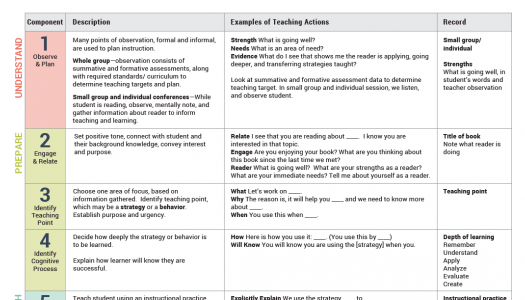Narrowing the Focus and Length of a Lesson to Make It Brain Compatible
Join Our Community
Access this resource now. Get up to three resources every month for free.
Choose from thousands of articles, lessons, guides, videos, and printables.
Knowing how the brain works helps us realize that the resources we use often include lessons that are too long for our students. When teaching a lesson, be it whole-group, small-group, or an individual conference, we want to keep in mind what Dr. Ken Wesson taught us at a conference. He was the first person we encountered who made the direct correlation between children's ages and the effect lesson length has on their ability to process and retain information presented during direct instruction. It was Wesson who originally taught us the rule of thumb: the average number of years children are in age equals the average number of minutes they can maintain attention during direct instruction.
Several books on brain research and brain-compatible learning have been published since we first heard Wesson speak. In his book, Brain Rules, John Medina discusses the fact that the brain has a stubborn timing pattern of 10 (2009). After about 10 minutes of direct instruction, the brain must make a shift to refocus. We simply cannot ignore the implications of these types of studies; if we do, we must know the ramifications of lessons that run longer than 10 minutes: we are not being the most effective with our instructional time, because the ability to retain information is greatly decreased.
Knowing this, how in the world do we use our sometimes required program or resource to teach lessons? In this video, you will hear Shannon Campbell share exactly what she thinks about when approaching her lessons. As you watch, notice how Shannon uses her resource to provide extra support and extend the lesson to differentiate for the students in her classroom.






